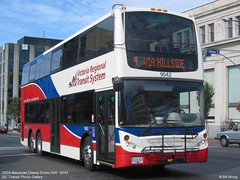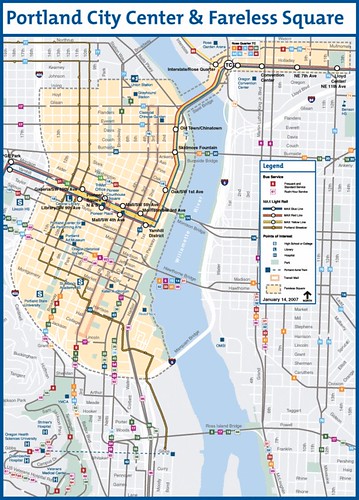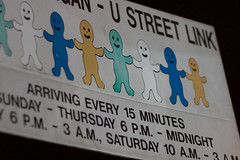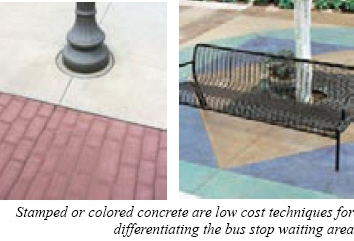(local) AP story on improving bus service
Is available via the Baltimore Sun, "Bus systems work to lure riders."
---------Reprint of section on improving local bus service from the past blog entry, "The revised revised People's Transportation Plan/2008 Transit-Transportation wish list" from January and February:
20. Improve the bus service. I say do this before thinking about streetcars. We need to make bus service exciting and sexy, in order to boost transit use. I recommend better marketing and wayfinding systems, better bus shelters (coming) and waiting stations, and probably sexier buses, which to my way of thinking, would be double deckers, on routes that could accommodate them. Double deckers are 40 feet long, and more maneuverable than 60 foot articulated buses.

Double decker bus in Victoria, BC. Photo by Bill Wong.
21. Create intra-neighborhood transit (bus) services so that people can get to and from local services, commercial districts, schools, libraries, and to and from transit stations without having to drive. This includes delivery services of "freight" such as groceries. In my transportation and land use paper, I call this "tertiary" service (based on the Arlington model of the primary and secondary transit network, see their transportation plan). And it's not like we don't have a form of this now, at least within the city. Most neighborhoods have access to some bus service, although many people may not use it because it is circutuitous or because they feel that the bus service is beneath them.
22. I don't believe that transit needs to be free, but make intra-neighborhood bus service free. Many clamor for such. But cost isn't the biggest barrier to using transit. And places like Portland have the Fareless Square--funded in part by their transit withholding tax. But I think that equity issues make a downtown oriented fareless square somewhat unfair as the biggest beneficiaries would be the people with jobs downtown, who tend to not be those with the greatest need.

However, I suggest that the intra-neighborhood transit services (tertiary transit network) suggested in the previous section should be free. I estimate this would cost $30 to $40 million annually. Also see this blog entry: An idea for free public transit within DC.
23. Dump what I call political bus service. Many of the shuttles suggested have anemic ridership, and are offered in response to plaintive cries from businesspeople, but don't have an adequate justification from a transportation ridership perspective.
This includes the Adams-Morgan Link, the N22 linking Union Station, Eastern Market, and the Navy Yard, and the forthcoming H Street shuttle service, which will not only not be only at night, duplicating service on one of the highest service bus lines in the city, it will have an insane routing, wasting 3 miles and time going from the end of H Street to the Benning Road subway station, instead of doubling back to Union Station, or to the Eastern Market station.

Flickr photo by Techne.
We have limited resources. Let's use these resources widely.
24. Improve all "transit waiting environments" in the city. (See the report from Ohio: Transit waiting environments.) DC's bus shelter program is only for bus shelters. It doesn't impact WMATA bus shelters, and it doesn't impact bus stops that don't have bus shelters.
Sub-standard bus stops communicate to people that transit isn't valued.


Bus stop, 900 block of Monroe Street NE.
Labels: transit, transit marketing, transportation planning



0 Comments:
Post a Comment
<< Home